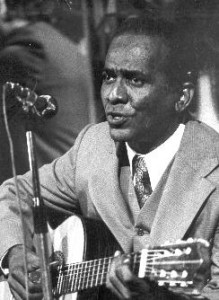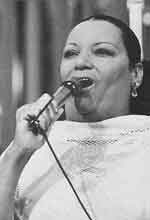Music and Culture: Yesterday and Tomorrow
March 2, 2012 by emlansdale
As we explore the complexity of the nature of the nation and nationality in the Período Especial, the role of the artist in Cuban society becomes increasingly blurred and dynamic. As Sujatha Fernandes discusses in her article on postwar reconstructions, even the definitions of “commercial” and “underground” have become distorted. Cuban youth struggle to reconcile their culture through music as the state, under Raúl, begins to gently open its doors. This increased acceptance of global markets and outside funding gives the Cuban music scene a whole new role in Cuban society.
Rappers are split into “underground” groups that challenge race stereotypes and are state funded and “commercial” groups that receive international funding and speak to a more global audience. This divide causes stratification in a once unified industry and calls into question the nature of truly Cuban music. Neoliberal globalization has touched all aspects of the music trade, from consumptive practices to American clothing and styles. Fernandes even suggests that the mixed styles characteristic of Orishas, Buena Vista Social Club, and Candido Febré y su Banda reflect this shift towards commercially centered music production. Others argue that these shifts are simply creating a new “estilo cubano,” often labeled “timba,” or Cuban dance music.
Cuba has always been known for its lively music scene, influencing musical genres globally pre-Revolution through the spread of Latin jazz, mambo, and cha-cha-cha. The recent Cuban film Habanastation touches on this global impact when they create a main character as an internationally renowned Cuban jazz singer. The novel Havana Fever illustrates this culture of music when music writer Rafael Giró speaks nostalgically of “sixty clubs and cabarets with two or three shows a night. Not counting restaurants and bars where trios, pianists, and combos played” in Havana. Conde obsesses over a long forgotten culture of bolero singers, implying the suffocation of artistic talent in the poverty stricken Cuba of the Período Especial. “You’ll Remember Me,” the haunting bolero of Violeta de los Rios, suggests a lost era that will forever influence Cuban rhythms. Sweig discusses a recent depoliticization of music; as artists are given more liberty, will music return to music for the sake of art or music for the sake of profit?
Our trip to Cuba will help answer this question as we explore the influence of the many Cuban legends Conde speaks of in Havana Fever; Anacaonas, Elena Burke, Benny More, Casino de la Playa, Olga Guillot, José Antonio Méndez, Chori, Bebo Valdéz, and Negro Vivar, to name a few. Elena Burke, known as the “senora sentiment,” had a loyal following at a local nightclub in Havana until her death in 2002. José Antonio Méndez, known as the author of the trova sub-genre “el feeling” crooned classical tunes starting in homes and later becoming globally renowned. Negro Vivar, the passionate pianist recognized for uniting Cuban exile musicians with their Cuban counterparts, is the most recent of these influential Cuban artists. Through interviews and observation of musical events in Cuba today, the current contributions of Cuba’s past rhythms to modern styles will become apparent.
One thing is certain, Cuban artists have learned to navigate the many fluctuations in their liberties, giving rise to new and dynamic music that soars above the hegemony of the state, constantly reaffirming itself as Cuban culture. As Olsen and Sheehy attest in their book Latin American Music, Latins consider music to be movement. Dance must inevitably be part of musical accomplishment and vice versa. Consequently, Cuban culture is Cuban music, they reflect and reinterpret each other in a never-ending danza.
Sources:
Cebrian, S.. “Orquesta “Anacaona”. ” Bohemio News 19 Dec. 2008,Ethnic NewsWatch (ENW), ProQuest. Web. 2 Mar. 2012. (Placeholder1)
Dalia Acosta. “MUSIC-CUBA: ELENA BURKE, LEGENDARY SINGER, DEAD AT 74. ” Global Information Network 20 June 2002 Research Library, ProQuest. Web. 2 Mar. 2012.
Olsen, Dale A., and Daniel Edward Sheehy. The Garland Handbook of Latin American Music. New York: Garland Pub., 2000. Print.
Sanchez, Armando Ledon. La Musica Popular en Cuba. USA: Intelibooks. 2003. Web. 27 Feb. 2012.
Sujatha Fernandes, “Fear of a Black Nation: Local Rappers, Transnational Crossings, and State Power.” Anthropological Quarterly 76:4 (Fall 2003), 575-608.
Cuba: What Everyone Needs to Know, Julia E. Sweig
Leave a Reply
You must be logged in to post a comment.


